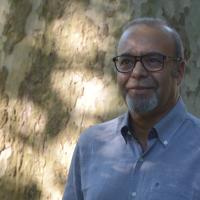
Agroecology Reading time 3 min
Ahmed Barkaoui: a model economic research engineer for France’s forests
Published on 19 July 2019
The common thread of my work has been trying to align statistical data to simulation models
After university studies in applied mathematics and statistics, Ahmed Barkaoui joined INRA’s Economics and Rural Sociology Division in 1990, where he worked on agricultural production economics until 2004. He began by looking into agricultural distribution and changes in farmers’ incomes as well as comparing productivity between farming operations by applying the index-number theory to a range of statistical data. Against the backdrop of international trade negotiations and Common Agriculture Policy (CAP) reform in the early 1990s, he then directed his research to analysing their impact on the agricultural sector via modelling and simulations. “Using the Farming Accountancy Data Network (FADN) database, I was able to develop a representative agriculture production model for the French and Europeans regions that was used to simulate the CAP’s effects and provide decision-making tools,” explained Barkaoui.
Statistics: from fields to forests
During the division’s reorganisation in the 2000s, Ahmed Barkaoui switched his focus to forest economics and to modelling the forestry and wood-industry sector. In 2003, during a visit to the University of Wisconsin-Madison in the United States, Professor Joseph Buongiorno showed him the Global Forest Products Model (GFPM) that he had developed and allowed him to take it back with him to INRA. “Despite the economic and environmental importance of France’s forests, our country did not have a forestry sector model,” Barkaoui said. When he returned to France, he held a meeting with international specialists in this area to lay the foundations for such modelling in France. As a result, the French Forest Sector Model (FFSM) was created – a tool that has led to a large number of research projects, theses and publications on the forestry sector in France and related economic forecasts.
As part of the “Forests for Tomorrow” Chair1created in 2011, Ahmed Barkaoui then studied the impact that organisational strategies were having on the sector, in particular, the new legal possibility for the French National Forest Office (ONF) to sell wood directly to businesses through supply contracts and no longer solely through public tenders. To do so, he worked with other mathematical tools such as the game theory to produce models and simulations based on actual observations.
An evolving, increasingly complex and robust model
The validation of models and simulations is a very important step in the process.
Over the years, INRA’s forest model has expanded significantly. “It has evolved and will continue to evolve as we are constantly integrating new modules into it to answer specific questions,” explained Barkaoui. Today this INRA engineer continues to work at various levels of model development, such as methodology, parameter estimation, programming or analysis, but he is also trying to devise new procedures to validate and evaluate models and simulations. “The common thread of my work has been trying to align statistical data to simulation models to enhance the relevance of their results. Since our forest models are complex, model and simulation validation in particular is a very important stage in the process.”
An author of numerous publications on agricultural and forestry modelling methods, Ahmed Barkaoui is a member of SAE2’s “Expertise and Modelling” engineer network. He also teaches forestry economics at AgroParisTech and INFOMA (national training institute for French Ministry of Agriculture staff) and gives courses in microeconomics, macroeconomics and statistics at Paris Nanterre University.
1 INRA – AgroParisTech – ONF
2 Joint Research Unit: University of Strasbourg/CNRS/University of Lorraine/INRA/ AgroParisTech
Mini-CV
- Married with 3 children
- 1995: Doctoral thesis: La désagrégation temporelle des séries d’observations économiques (Temporal disaggregation of series of economic observations)
- 1990: Joined INRA-Nancy2
- 1988: Junior officer, OECD Development Centre, Paris
- 1986: DEA (post-graduate degree) in Applied Mathematics-Economics
- 1985: Master’s degree in Applied Mathematics, Optimisation and Statistics
